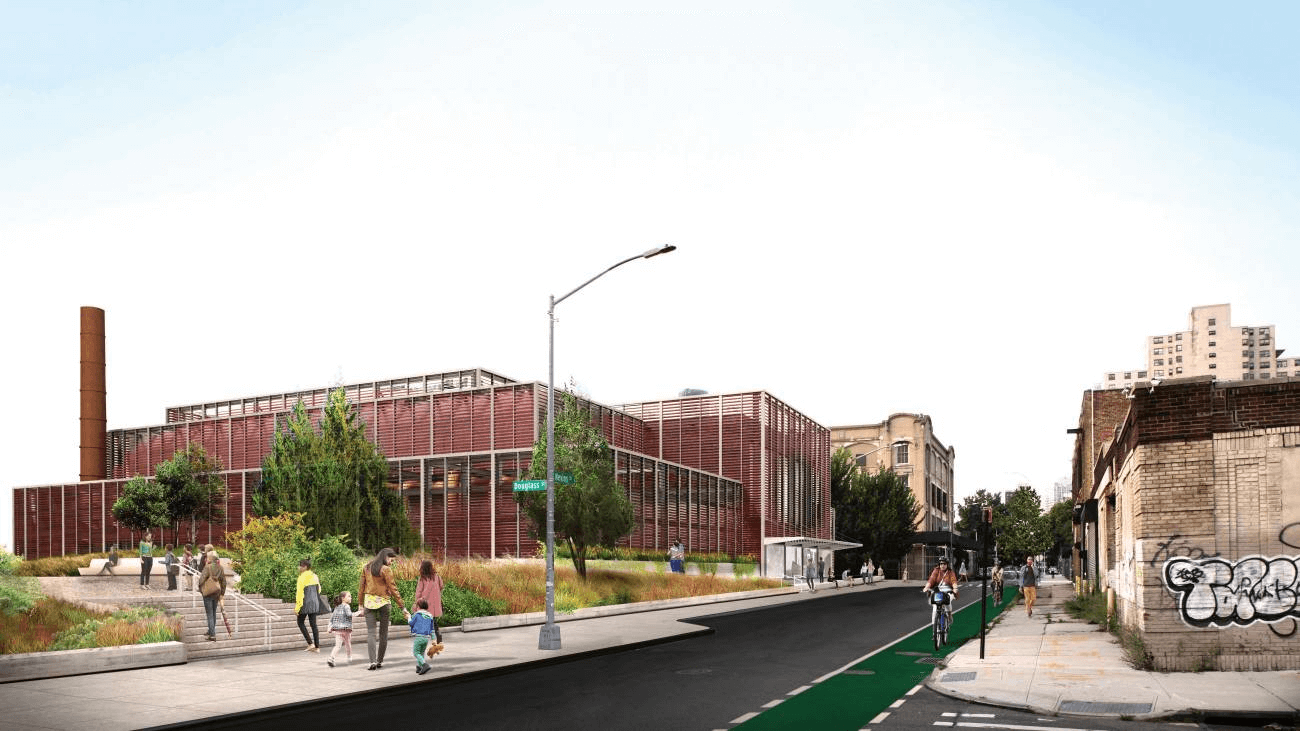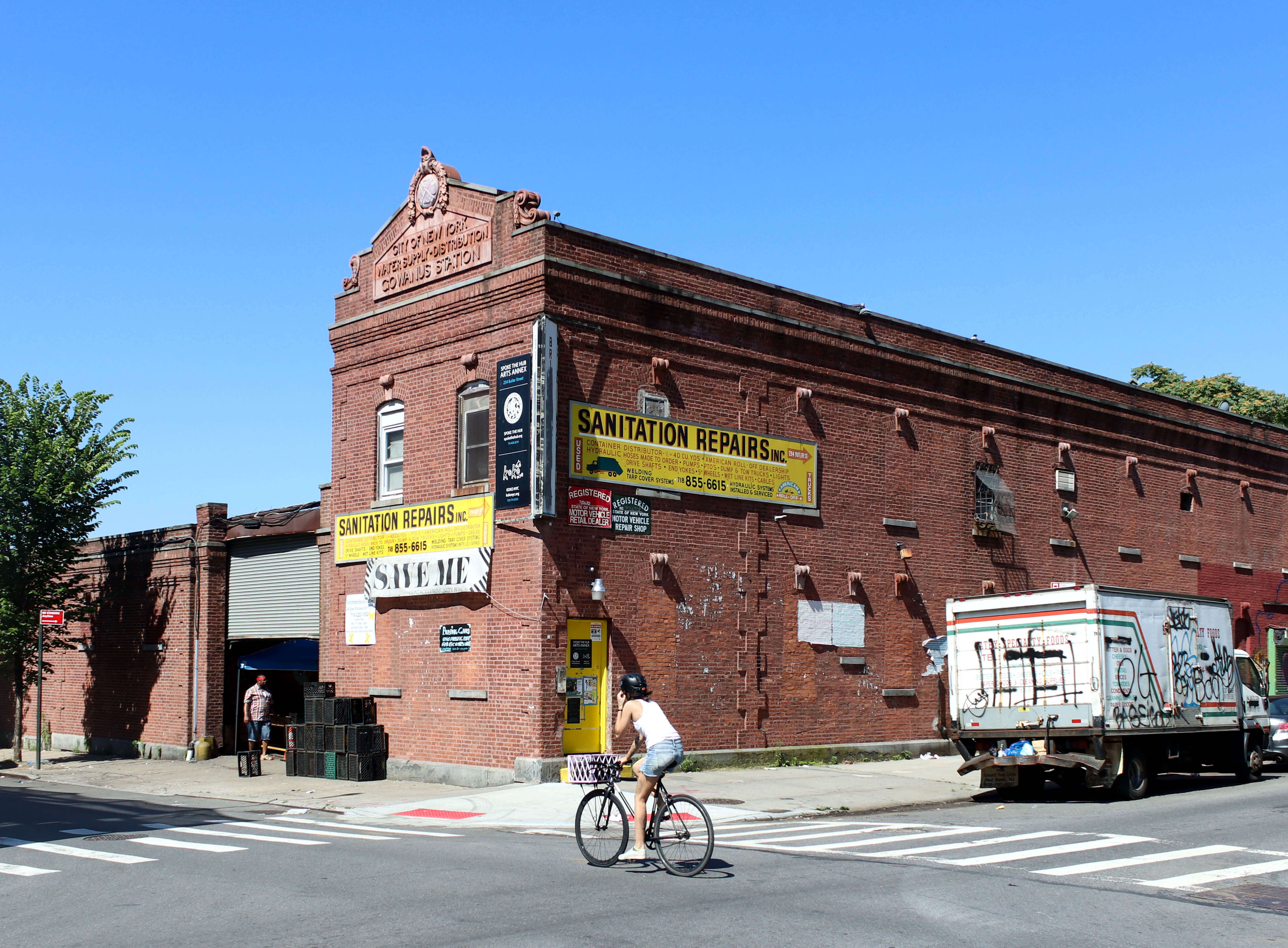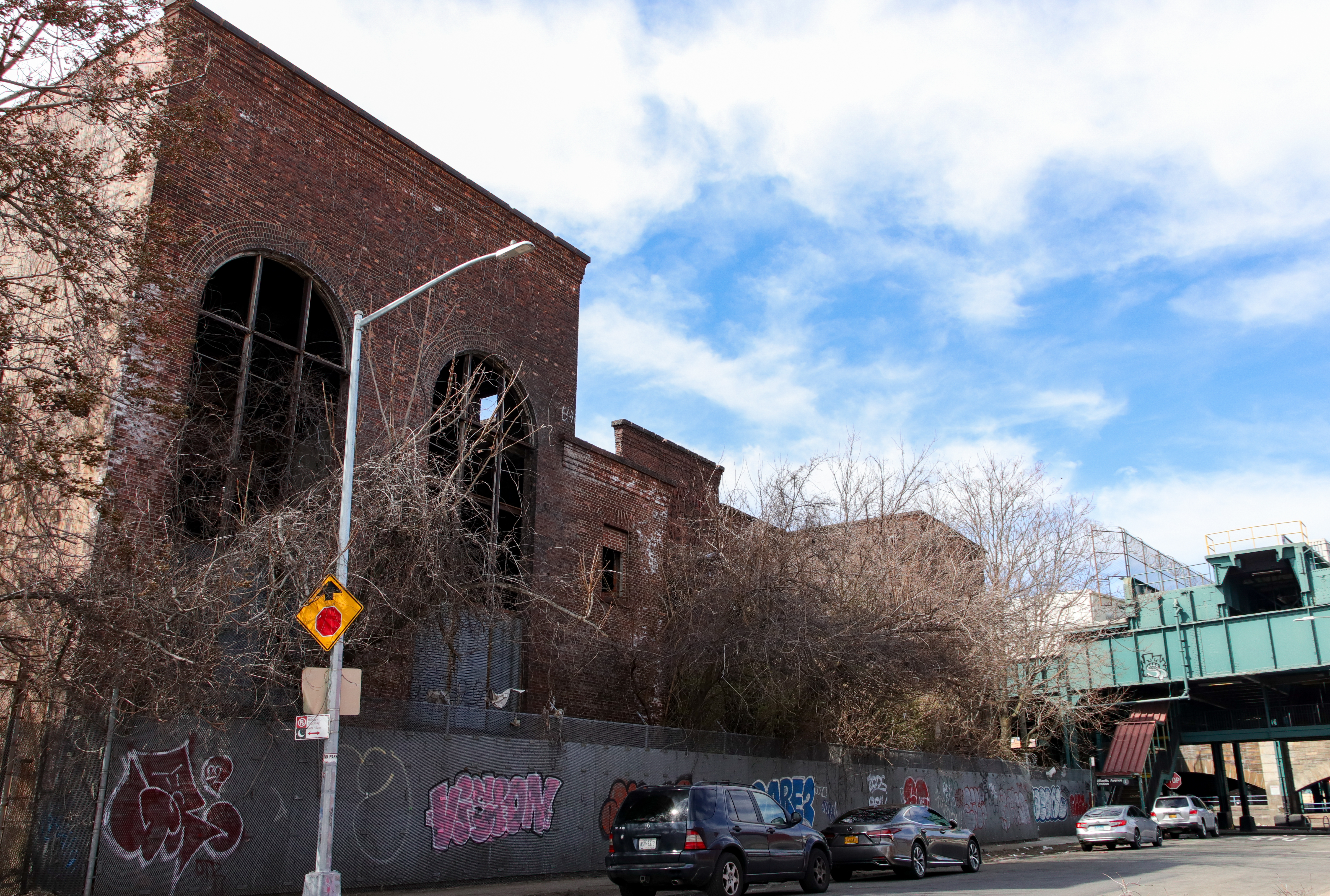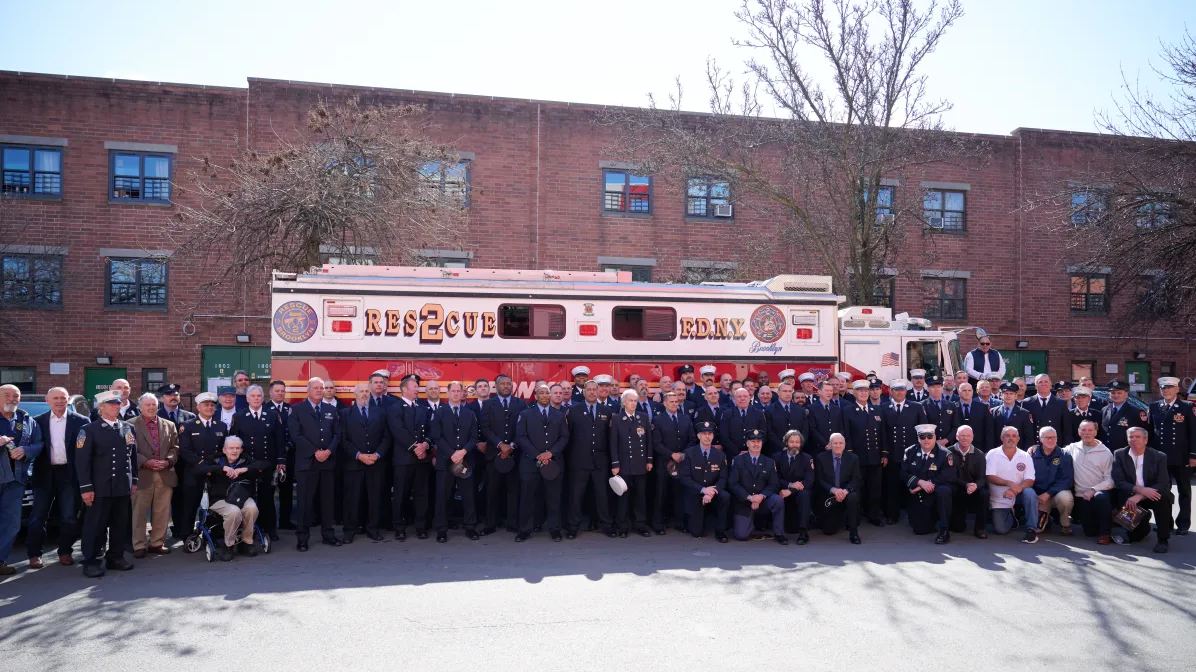City Says It's Prepping to Start Construction of Gowanus Retention Tanks
The delayed project is a crucial part of the Superfund cleanup of the Gownaus Canal.

A rendering of the headhouse at Head End, the larger of two combined sewer overflow catch basins being built by the DEP. Rendering via Selldorf Architects
After a nudge from the feds, New York City said it’s finally getting going on its delayed but crucial part of the Superfund cleanup of the Gownaus Canal.
“Minor mobilization” work is set to begin on the future site of the Head End Combined Sewer Overflow tank starting next week, ahead of more work expected to begin next year, said Kevin Clarke, a manager at the city’s Department of Environmental Protection at Tuesday’s meeting of the Gowanus Community Advisory Group.
DEP will start delivering equipment and materials including storage containers and barriers to the Head End site, according to spokesperson Edward Timbers, with construction trailers delivered in mid-December and new fencing built at the end of the month.
The update came after Brian Carr, a lawyer with the federal Environmental Protection Agency, the group overseeing the Superfund cleanup of the Gowanus Canal, said they are “in the process of responding to the city’s notice of intention to not comply,” with provisions of the agency’s cleanup orders — namely, the timeline of design and construction of two huge stormwater and sewage retention tanks to be built alongside the canal.
The tanks are a necessary addition to the $1.5 billion dollar federal sweep of the canal, which started last fall. Through at least 2023, the agency will be at work dredging an average of 10 feet of “black mayonnaise,” as the toxic sludge is known, from the bottom of the 1.8 mile waterway, adding steel bulkheads, and capping the bottom of the canal with clean sediment to ensure any remaining chemicals don’t seep back into the water.

Part of the cleanup is ensuring the water isn’t polluted again, which is where the tanks come in. New York City’s sewers are combined, meaning stormwater and wastewater flow through the same system. During periods of heavy rainfall, those sewers overflow — sending thousands of gallons of contaminated water into the canal. The tanks are meant to catch and hold that overflow and gradually filter it back to the sewer system after those rain events, reducing the amount of waste sent right back into the canal.
The EPA’s primary complaint has been the city’s long delay on the design and construction of the tanks. If they are not completed until after the feds are done scrubbing the canal clean, toxic sludge might start to accumulate at the bottom of the canal again.
Diving in
Construction at Head End, the larger of the two tanks, is set to be located at Butler and Nevins streets, and has been broken up into three “construction packages” on two parcels of land — one for the tank itself and one for the staging area needed for construction.
“CP1 is basically site preparation, including demolition of existing structures,” Clarke said.
Construction Package 2 is below-ground work, like excavation, and pouring the foundation of the structure, and Package 3 includes the mechanical and electrical elements of the project.
DEP issued a “notice to proceed” for Construction Package 1 in October, Clarke said.
“As far as real activities there, you will see us setting up what we call ‘maintenance and protection of traffic and pedestrians,’ that’s literally mobilizing Jersey barriers and that kind of thing in the street, setting up trailers and new fencing,” he said. “And some of the early activities include sampling and abatement of regulated materials — things like flaking lead paint, asbestos, PCBs, that sort of thing.”
That sampling will begin at Construction Package 1 next month, and at Construction Package 1A, the staging site on Nevins Street at the former home of the Eastern Effects soundstage, in February, after the notice to proceed is issued in January.
Demolition of existing buildings at the sites is expected to begin next spring.

At the same time, the department will be prequalifying contractors for the next stages of work “because it’s pretty complex,” Clarke said.
Supportive excavation includes constructing a slurry wall, he said, and “pretty significant foundation construction.” Work on CP2 is slated to continue through 2027.
Design for CP3 is “pretty much complete” and had been submitted to the EPA, Clarke said, but designs need to be revised because of “additional coordination” with Con Edison and the reconstruction of facades at 234 Butler Street.
“That is nearly done, there was some correspondence with Con Edison as recently as this morning, and we expect to be able to submit that redesign to EPA shortly,” he said. “We would start construction in spring of 2027, and we expect to complete construction in the fall of 2030.”
Work at Owls Head, where the mid-canal water tank will be located near 5th Street and 2nd Avenue, is split into four construction packages, including the construction of a steel bulkhead at the Salt Lot. Design on the bulkhead is complete, Clarke said, and DEP is working with an “apparent low bidder,” and hope to finalize the contract and begin work early next year, with the goal of completing it by January 2023.

The other three construction packages are similar to those at Head End, Clarke said, though CP1 also includes the relocation of the Department of Sanitation’s salt storage and composting facilities currently housed on the Salt Lot. The city is also expected to relocate the Gowanus Canal Conservancy facilities from the lot.
Design of all three packages started in May, Clarke said, and design for CP1 is due to the EPA in May 2022. Procurement would begin as soon as possible after that, with construction hopefully beginning in spring or summer 2023.
DEP is currently scheduled to complete construction at Owls Head by summer 2029. Earlier this year, the EPA ordered the city to complete Head End by 2029 and Owls Head by 2028.
That order came after city officials missed deadlines to submit designs to EPA, then said that construction at Head End would not be completed until 2032 — after the Superfund cleanup is set to finish. The tanks would prevent combined sewer overflow from running into the canal and re-polluting it after the pricey cleanup. Any additional dredging needed after the Superfund is complete would be funded by city dollars, and the agency has already warned the city that they may incur steep financial penalties if noncompliance continues.
‘We have not resolved our issues with the city’
DEP has repeatedly disagreed with the city’s allegations that they are out of compliance — a stance deputy director Michael DeLoach doubled down on during Tuesday’s meeting.
“We do not believe that we’re out of compliance with the order,” he said. “There have been conversations with the EPA and DEP in addition to correspondence back and forth, but we, as you’ll see, have met the milestones to date. There is some outstanding questions about the schedule and about whether or not some of the monitoring falls within the [Record of Decision.]”
The EPA hitting the city with penalties is a possibility, Carr said.
“Let’s put it this way, we have not resolved our differences with the city, and the period of the city being out of compliance with EPA’s orders has essentially grown longer,” he said.
The department was keeping in mind the context of the recently passed Gowanus rezoning, he said, hoping city officials would recognize the importance of collaborating with the EPA on the tanks as part of the plan to keep CSO overflow to a minimum.
“I would say we are closer to the point of a decision on where to go next, and that may turn in part on our response to the city’s claims in their July letter that EPA is to blame for various of these problems,” he said. “We fundamentally disagree with that, and have, I don’t know, five years worth of information about who’s responsible for various delays. So we’re going to ask the city to reconsider their position, I think.”
According to the EPA, the city is in noncompliance on several fronts — they are behind on demolition of the buildings that currently stand on the Head End site and preservation at 234 Butler Street, among other orders. If penalties were issued, Carr said, the city does not have a way to dodge them — and that may be enough to get things moving.
EPA would rather use the money they have accrued from the parties responsible for cleanup to take over the projects themselves — using the city’s claim that they should not be responsible for monitoring water quality at all of the sewer outfalls along the canal as an example.
“We can take over work, such as sampling of CSO outfalls and things like that, and for every dollar that we spend, we can obtain penalties across the city and damages,” he said. “Plus, recover the money that we actually spent.”
In June, the EPA said the city will be responsible for monitoring water quality and contamination at each of the sewer outfalls that discharge their contents into the canal “for the purpose of determining whether CSO solids removal will be required to mitigate impacts to sediment from CSO discharges” when dredging is finished. The next month, the city replied, objecting to the order and claiming that they are only responsible for monitoring two sewer outfalls, not each one along the canal, and said “sampling effort required to sample each and every outfall during wet weather would be extremely impractical, expensive and burdensome.”
The letter went on to say that if contaminated sediment was found, it would be “infeasible” to determine its source.
“I think one of the things everybody has to ask themselves is ‘Why does the city not want to perform sampling that is done under a protocol that EPA has approved to determine what’s going into the canal?’” Carr said. “I think the answer to that question is fairly self-evident. So we will do that work, and we have the money to do that work, if that’s what’s needed to be done.”
Editor’s note: A version of this story originally ran in Brooklyn Paper. Click here to see the original story.
Related Stories
- City’s Latest Proposal for Public Space in Gowanus Canal Cleanup Meets With Conflicting Responses
- Locals Question $1.2 Billion Cost of Gowanus Canal Tank Project, Say Gowanus Station Can Be Saved
- Giant Underground Tunnel Could Replace Sewage-Gobbling Tanks in Gowanus Canal
Email tips@brownstoner.com with further comments, questions or tips. Follow Brownstoner on Twitter and Instagram, and like us on Facebook.









What's Your Take? Leave a Comment